Innovation and Cutting Edge Classes Challenge My Perspectives
Winter break is always a great time for family, friends, food, holiday spirit, but also for reflection on the past semester. I noticed something about my past two semesters:
I just finished a marketing class in the business school recently originally titled Marketing Sustainability. I decided to take it because I enjoyed Intro to Marketing and I have always been a sustainability focused person. It sounded interesting and my marketing professor recommended it, so why not take it? When I walked into the class the name had changed to Sustainability In Design. The course would focus on sustainability frameworks and introduced the class to designing thinking before Fall Break, then after Fall Break it would transition into a design course in the brand new design studio. Once Professor Luchs said this to the class and went over the syllabus everyone’s mouths dropped and you could hear the collective thought floating around: We get to do this?! We integrated the course with the 3CS Conference hosted by the undergraduate business school and W&M’s Net Impact chapter. The class walked us through design thinking’s various stages and offered insight into product design and problem solving. The best part is the classroom space.
- The whiteboard to present an elevator pitch to the 3CS Conference. All the whiteboards are on wheels to move around the classroom easily.
- Utilizing the whiteboard and sticky notes to come up with ideas and put them on scales to make product design decisions.
- The prototype we developed using the resources in the classroom supplies like glue, construction paper, and more to build a model town to demonstrate our shipping delivery and pick up service idea.
The class room challenges students to think differently about problem solving and allows a warm and creative space in which to operate. This is a new class rethinking how to do product design, how to redesign the classroom space, and how to approach teaching in a different manner. The classroom challenged the notion of what a classroom experience should be. The professor was a guide helping think through our thought process and gave us advice and new ideas and perspectives to consider. The classroom was open and flexible with everything in the room a prop or tool. Some of the walls were even whiteboards. We would be challenged to work with our teammates that all had different perspectives and ideas. The class was so different and comprehensive, and yet it was something I expected at William & Mary because it student was focused and discussed a subject the professor wanted to teach about. We left with ideas about answering the question: How can sustainability and design thinking offer better products and meet unmet needs in the marketplace?
This class is just one example of how William & Mary continues to be on the cutting edge and promote innovation in the undergraduate experience. I also took a History of American Capitalism class. This class covered the financial panics of the United States in 1792, 1819, 1837, 1857, 1873, 1893, 1929, and the oil shocks of the 1970s. The class was an interesting mix of history, economics, and business majors. Everyone was interested in learning this history and Professor Nelson just released his book about the subject: A Nation of Deadbeats, making the class a hot commodity. It was a new class being offered to undergraduates as this country’s economy struggles after a new financial panic. I remember when the crash was happening in 2008 the comparisons that were being made to the Great Depression and the crash in 1929, but my professor said the crash resembled 1873’s panic. He made several predictions what would occur, and was right. The class reemphasized the importance of understanding multiple disciplines to reconsider our views of the world at a very relevant time in US history. The class was interdisciplinary with topics covering economic philosophy, credit markets, currency history. This class challenged us to consider different economic philosophies and discover which answer seemed most appropriate for the question: What caused this panic?
In the Spring 2012 semester I took a class with my major advisor, African Diaspora before 1492. The class discusses and investigates the travels of sub-Saharan African people outside of Africa before the much more well-known slave trade time period. Again, it was a subject I had never considered, but a subject I wanted to learn about after Professor Pope had caught my interest in early African history. At the end of the class my professor said he searched around the country for another class like it and said his class is the only one at the undergraduate level to discuss this material. It fascinated me that I was learning about a subject that very few in the world would have known about or even considered. This class challenged our notions of history and how we view history’s context. It also had us view world history differently as we looked at the Indian Ocean trade and how Europe became a part of it. I walked away challenging my perspective of how the world is viewed historically. I left thinking: why do we view history the way we do?
Each of these classes demonstrates how William & Mary continues to offer its professors the opportunities to teach about subjects they want to introduce to undergraduates. Professors at W&M care about the undergraduate students and want to bring interdisciplinary classes and rare topics to the undergraduate experience. I continually am impressed with the professors and how well versed they are in so many topics. The College continues to push the undergraduate experience with classes that are different, unique, or innovative. Students are always pushed to be reconsider and think differently in these unique classes. This has been part of William & Mary since 1693 and continues today. Find these classes and don’t be afraid of classes of rare material or unknown subjects as the school innovates and offers its students a unique classroom experience with unconventional classrooms and unknown subjects. We are truly a liberal arts university offering unique student centered classes with professors that want to teach while allowing professors to offer classes about subjects that are new and fresh in the academic world. I will continue to ask questions and reconsider my perspective. I am lucky to attend The College of William & Mary.
Tribe Pride Innovation,
Stephen

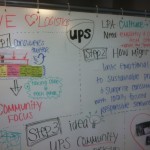
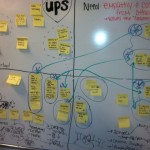
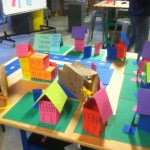
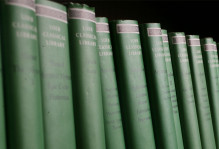
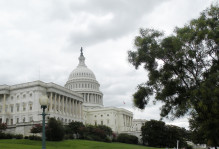
No comments.
Comments are currently closed. Comments are closed on all posts older than one year, and for those in our archive.